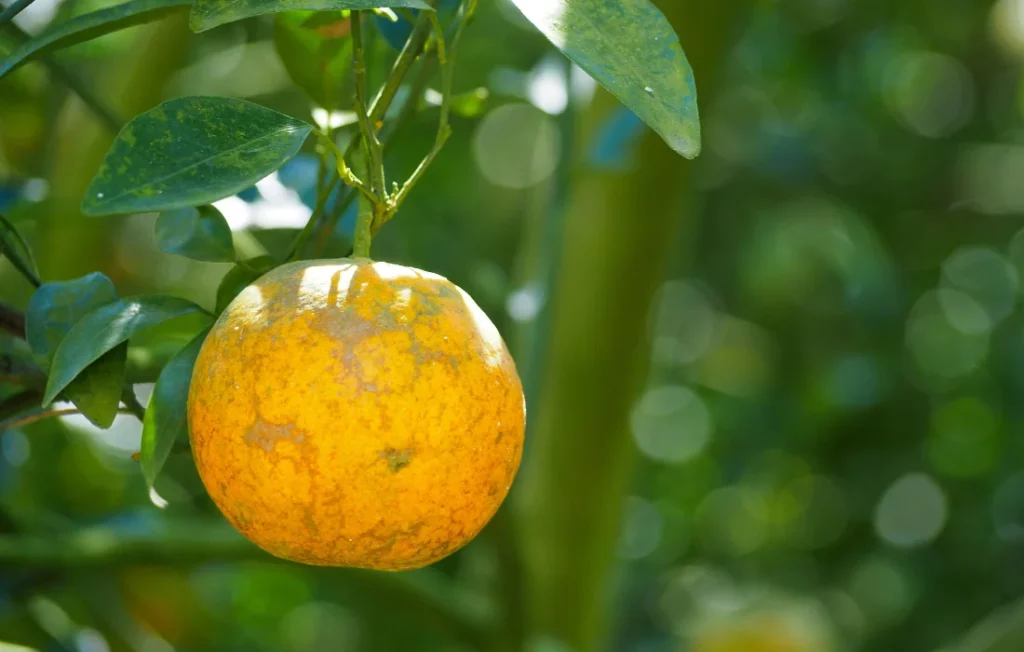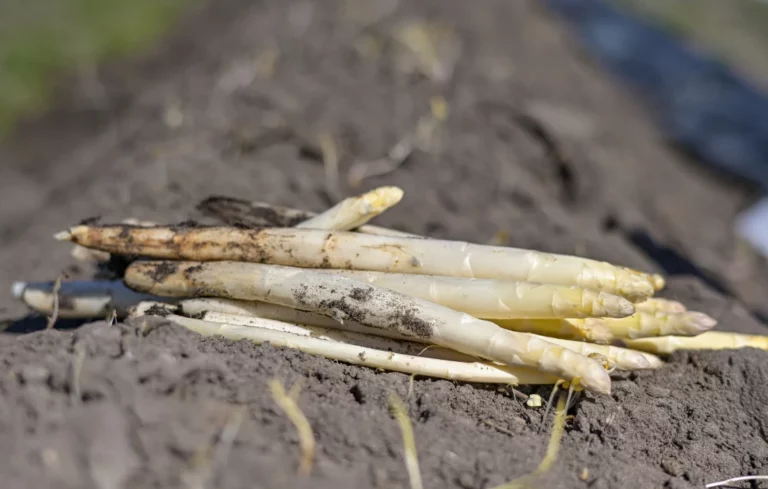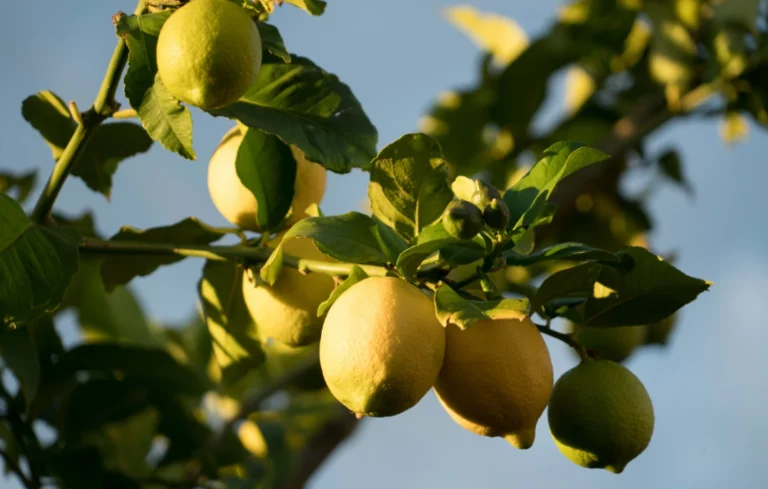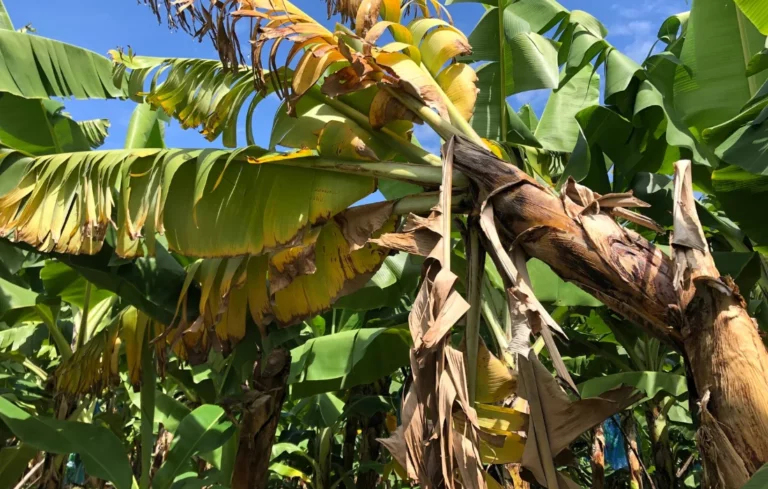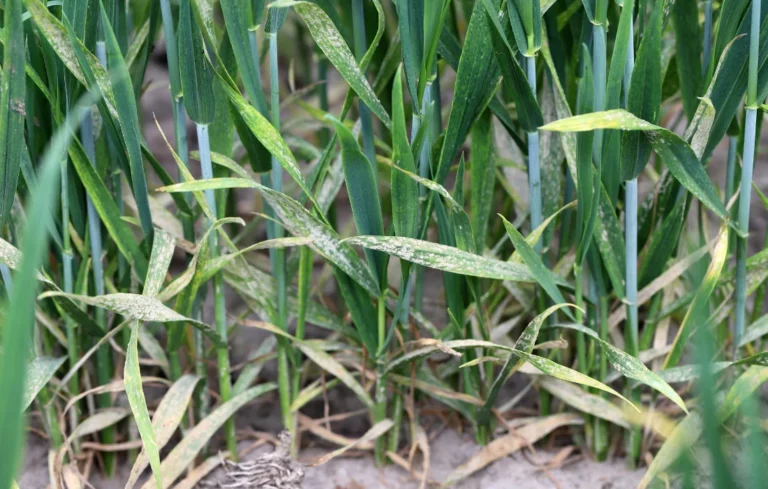Mandarin trees are susceptible to several diseases that can compromise their health, productivity, and harvest quality. Fungi, bacteria, and viruses attack their leaves, fruit, and roots, weakening the tree and reducing yields. Let’s discover how to identify these diseases and how to effectively combat them with natural solutions.
Diseases on the trunk and roots of the mandarin tree
The diseases below target the trunk and roots of the mandarin tree.
Gummosis
Gummosis , caused by fungi of the genus Phytophthora , is one of the most common diseases of mandarin trees. It often appears after prolonged periods of humidity or on poorly drained soils.
The first symptoms appear as a discharge of viscous, amber-colored gum from the trunk or main branches. Beneath this area, the bark turns brownish, peels off, and then reveals necrotic tissue. Gradually, the foliage turns yellow, the branches die back, and the tree loses its vigor.
Overly compacted soil or excessive irrigation strongly favors the development of the fungus. It is therefore advisable to favor well-aerated soil, monitor watering, and protect wounds after pruning.
Rotten
A sudden decline and death of the mandarin tree is observed due to Armillaria mellea and Rosellinia sp. Under the bark of the roots and in the soil, there is a network of whitish filaments or cottony cords, initially whitish and then brown.
Viruses: psorosis, exocortis and others
More discreet but just as formidable, mandarin tree viruses are most often transmitted by grafting or contaminated tools .
Among them:
- Psorosis , which causes mosaics on the foliage and flaking of the bark .
- Exocortis , responsible for cracks on the trunk and deformation of the fruit.
These diseases develop slowly, but weaken the plant permanently. The best prevention remains the use of certified healthy plant material and rigorous disinfection of pruning tools.
Agrobiotop solutions against diseases of the trunks and roots of mandarin trees
3 liters CHITOPROTECT + 3 kg BENTOBIO / 800 liters of water / hectare
renew every 14 to 21 days if necessary until the disease disappears
BENTOBIO
As a dusting : From 8 to 15 kg/ha
Action on the soil – decompaction and aeration of the soil (Very important to fight against this disease)
For viruses: disinfection of tools: Vinegar 10% (basic substance)
Do not hesitate to contact us for more information .
Diseases on mandarin tree leaves and branches
The diseases below affect the aerial parts of the mandarin tree.
Citric canker
Citrus canker , caused by the bacterium Xanthomonas citri , is spread primarily by wind and rain. Infected young plants are often the source of infection. This disease is recognized by the appearance of small orange pustules , surrounded by a yellow halo on the leaves, fruits and twigs. These lesions cause premature leaf fall and fruit deformation, significantly reducing production. Well-ventilated orchards, with spaced plantings and regularly disinfected tools, limit the spread of the pathogen.
Cercospora leaf spot
Cercospora leaf spot on mandarin trees is caused by Cercospora angolensis . We notice small yellow spots becoming darker surrounded by a halo on the leaf blades.
Greasy Spot Disease
Greasy spot disease is identified by dark brown, greasy spots, most visible on the underside of the limb.
Sooty mold
Sooty mold is not a directly infectious disease, but a consequence of the activity of certain insects such as scale insects, aphids or whiteflies . These pests secrete honeydew on which saprophytic fungi develop. The foliage then takes on a blackish and sticky appearance , hindering photosynthesis and slowing the growth of the tree. Eventually, the leaves turn yellow and fall.
The fight involves controlling insect populations. Natural auxiliaries (such as ladybugs or lacewings) and biological treatments based on plant extracts or black soap can be used.
Anthracnose
This disease is very common on many tropical trees, caused by Glomerella
Anthracnose is manifested by the appearance of spots ranging in color from brown to black on different parts of the tree. It easily develops around an insect bite (gall midges, fruit flies, flower bugs, etc.).
Glomerella cingulata is the sexual phase, Colletotrichum gloeosporioides is the asexual phase.
On fruits, black circular spots of more than 5 mm in diameter form on the surface of the epidermis, beneath which the pulp turns brown and rots.
On ripe fruits, the fungus penetrates the cuticle, but remains dormant until the fruits begin to ripen or when they are stored in cold storage.
On leaves, small circular black spots appear, the necrotic part eventually falls off and the leaf blade then has numerous perforations.
On the stems, we observe a dieback of the branches from the end of the stem.
Spores of this disease develop in dead leaves and are spread over short distances by rain or over-irrigation. The fungus can remain in fruit tissue without causing symptoms until attacked by other factors or after harvest. From year to year, it survives in infected and defoliated branch tips and in mature leaves.
Rain is the main vector for the dissemination of fungal spores.
Alternaria
Also known as black rot, this disease results in the formation of a dull black powdery rot in various areas. Although barely visible externally, this fungus settles deep down and necrotizes the pulp, entering through pre-existing cracks. Alternaria sp . spores are present year-round in orchards and also in warehouses.
- On infected fruits : early coloring compared to other fruits.
- On the leaves and fruits : presence of small dark spots surrounded by a lighter halo.
- On more mature fruit , lesions may develop into large spots. The skin forms a cork barrier that peels away from the surface. In the later stages of the disease, the cork may fall off, forming craters or marks on the surface of the fruit.
It overwinters in infected plant debris by means of asexual spores called conidia.
Conidia are dispersed by air currents and their release from lesions is triggered by a sudden increase in humidity. The ideal temperature is between 15 and 35°C, with an optimum at 25°C. Long periods of humidity and very dense vegetation, which limit the dissipation of humidity, favor this disease. They can also be carried by the citrus leaf miner ( Phyllocnistis citrella ).
Elsinoe fawcettii – Scab
Scab is a fungal disease that appears as irregular, corky pustules. Spores are produced on the surface of the pustules and then spread to new, susceptible tissues. Excessive moisture in the field favors scab.
On fruits , irregular corky pustules infected in the early stages of their development, the fruits become deformed and are subject to premature drop. Infected fruits cannot be marketed.
On young leaves : tiny water-soaked spots that turn into pustules, reduced photosynthesis. On stems: pustules, reduced flowering.
Spores are produced in a moisture-saturated atmosphere, between 20 and 28°C. The incubation period (time between infection and the appearance of the first symptoms) is at least 5 days. Leaves are susceptible to infection when they emerge from the bud until two weeks later, then become resistant before reaching their maximum size. Spores are carried by wind or water to new individuals, as well as by the transport and marketing of infected plant material and tissues.
Rhizoctonia solani (Thanatephorus cucumeris)
Rhizoctonia solani, formerly known as Thanatephorus cucumeris , is a soil-borne fungus that preferentially develops on organs present in or near the soil. It attacks many species, particularly vegetable crops. In English, the term for this disease in citrus fruits is “aerolate leaf spot”.
The main attacks occur in nurseries when the foliage is close to the ground.
Symptoms on mandarin leaves: dry, circular spots 0.2 to 3 cm in diameter, surrounded by a crown.
Spores are produced only in warm, humid conditions. They then germinate and infect young leaves.
Huanglongbing (HLB) or “Yellow Dragon Disease”
HLB , caused by the bacterium Candidatus Liberibacter , is considered the most serious disease of citrus fruits . Transmitted by psyllids, it attacks the vascular system of the mandarin tree. The leaves show irregular yellow spots and green mottling , while the fruits become deformed and asymmetrical, often half-colored. The taste is altered and production collapses. Eventually, the tree dies completely. Control relies on early detection, destruction of infected plants and protection against vector insects using nets or biocontrol products.
Mal secco ( Phoma tracheiphila )
This disease, caused by water stress and injuries, blocks the flow of sap. Symptoms on mandarin trees appear as drying out of branches and leaf necrosis . Without intervention, branch death gradually spreads.
Agrobiotop solutions against leaf and branch diseases of mandarin trees
3 liters CHITOPROTECT + 3 kg BENTOBIO / 800 liters of water / hectare
renew every 14 to 21 days if necessary until the disease disappears
BENTOBIO
As a dusting : From 8 to 15 kg/ha
Action on the soil – decompaction and aeration of the soil (Very important to fight against this disease)
Against pests that cause sooty mold (mealybugs, aphids and whiteflies)
YAKASELF (Dose: 10 liters/100 liters of water/hectare. Add to the 1% solution of black soap or wetting agent based on rapeseed or sunflower oil. Apply as soon as the first pests appear)
Do not hesitate to contact us for more information .
Diseases on mandarin fruit
The following diseases affect mandarins.
Whitish rot of the epidermis
Becoming greenish and powdery due to Penicillium digitatum called green rot
Becoming bluish and powdery due to Penicillium italicum called blue rot
Bitter Rot
Bitter rot on mandarins is caused by Oospora citri-aurantii : a whitish, slimy rot of the fruit. Softening.
Diplodia necrosis
This disease is caused by Diplodia natalensis : brown necrosis develops around the peduncle. Alternaria (rot).
Due to Alternaria spp, invasion of accidental epidermal wounds, accompanied by browning of the tissues or penetration through the stylar scar and development of dry black rot along the columella visible only when the fruit opens.
Agrobiotop solutions against mandarin fruit
3 liters CHITOPROTECT + 3 kg BENTOBIO / 800 liters of water / hectare
renew every 14 to 21 days if necessary until the disease disappears
BENTOBIO
As a dusting : From 8 to 15 kg/ha
Action on the soil – decompaction and aeration of the soil (Very important to fight against this disease)
Do not hesitate to contact us for more information .
Our Agrobiotop advice and solutions for protecting your mandarin tree crops
- BENTOBIO Sodium Bentonite Clay : This is a clay naturally rich in smectite and sodium montmorillonite. It has a high absorbency and a high cation exchange capacity.
- CHITOPROTECT (Food Grade Animal Chitosan). It is an elicitor, which activates the plant defense system, a natural polymer creating a protective biofilm.
- CHITOPROTECT CHITOSAN (Chitosan origin Aspergillus niger)
A synergy of action of the two products mentioned above against pests and diseases of mandarin trees
Against Pests (mealybugs, leafhoppers, aphids, thrips, mites, psyllids):
Physical barrier effect, spray in the form of a suspension (mixture CHITOPROTECT (chitosan of food grade crustacean origin or Aspergillus niger) + BENTOBIO (sodium bentonite clay). The solution forms a natural biofilm which disrupts the feeding of insects by preventing food intake by damaging the mouthparts of insects. It prevents stings or bites, avoiding the spread of viruses in certain cases as well as the laying of eggs by insects.
The texture of the two products CHITOPROTECT + BENTOBIO hinders movement, especially on larvae (mealybugs) and disorients insects. It acts as a mechanical repellent on pests. The leaves are less attractive to insects (less shine, fewer volatile odors released). It does not block photosynthesis of plants. No toxic effect for the user
Action against diseases:
Against Cercospora leaf spot (banana), Fusarium (banana, pineapple, avocado), Pseudomonas (banana), Rot (banana, pineapple, avocado, citrus), Anthracnose (banana, avocado, citrus, mango), Penicillium (pineapple), Powdery mildew (avocado, mango) Gummosis, Canker, Cercospora leaf spot, Yellow dragon (citrus) other crops. CONTACT US
Citrus, banana and pineapple crops are tropical crops that are very sensitive to humidity and fungal diseases. This solution, used in cultivation practices, is applied both preventively and curatively.
BENTOBIO + CHITOPROTECT is mainly known for its adsorption, water retention, and physical barrier properties. It is widely used in agriculture, but its direct use against crop diseases is based on preventive and curative effects or support for plant health, providing trace elements Iron. The combination of the two solutions is applied as a foliar spray to form a protective layer on the trunk, leaves, stems or fruits, it reduces and eradicates the germination of spores, mycelium, oospores by limiting their contact with the leaf surface. It also reduces sunburn which can weaken crops and promote the entry of pathogens;
Soaking the rejects
CHITOPROTECT + BENTOBIO Promotes better root development , making plants more resistant to root diseases (Phytophtora, rot, Fusarium wilt). Pre-soak shoots in the solution.
Does not interfere with plant photosynthesis. No toxic effect for the user
Uses – Indicative doses depending on the materials used.
CHITOPROTECT 3litre
BENTOBIO 3 Kg
800 to 1000 litres of water / hectare
The recommended doses may vary depending on the application method, whether by air (plane) or drone. The biostimulant products YAKADOP , YAKADOP and YAKASTAR can be added to this solution .
In addition to action (indirect on diseases and pests)
- SILIBOOST (Activated Silica SIO3) : Very important element in tropical crops to improve the structure of humid soils, thus avoiding water stagnation which is conducive to the development of diseases (rot, phytophthora, Fusarium).

